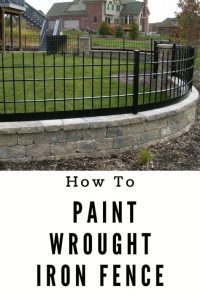Explore the essentials of historic district regulations, research local policies, navigate permit applications, consult preservation authorities, and discover fencing alternatives.Installing a fence in a historic district can be both an exciting and daunting task. As you embrace the charm of your property, the question often arises: do you need a permit? Conducting the right research is critical, as regulations can vary significantly by location and can be influenced by the architectural significance of your area. This blog post will guide you through the intricacies of understanding historic district regulations, the importance of local policies, and how to effectively navigate the permit application process. We’ll also discuss the value of consulting with historic preservation authorities and explore potential alternatives to traditional fencing that align with the unique character of your community. Whether you’re enhancing privacy or adding to your home’s aesthetics, being informed will ensure your project complies with local standards while preserving the integrity of your neighborhood.
Understanding Historic District Regulations
Historic districts are areas that have been designated as significant due to their historical, cultural, or architectural value. Regulations governing these districts aim to preserve their unique character and historical integrity. Adhering to local rules is crucial for residents and property owners who wish to maintain the charm of these areas while making modifications, such as installing a fence.
In most historic districts, any changes to a property’s exterior—including fences—typically require a permit. These regulations are enforced by local historic preservation authorities, and the process often involves submitting detailed plans that demonstrate how the proposed changes align with the district’s guidelines.
It’s essential to conduct thorough research on the specific regulations that apply to your historic district. Factors such as design compatibility, materials used, and height restrictions are frequently outlined in local guidelines. Ignoring these regulations can lead to fines or the necessity to remove recently installed fences that do not conform to the established rules.
| Key Considerations | Description |
|---|---|
| Design Compatibility | The fence must harmonize with the architectural style of nearby properties. |
| Materials | Commonly preferred materials include wood, wrought iron, and brick. |
| Height Restrictions | Typically limited to a certain height to maintain visibility and aesthetic value. |
Importance of Researching Local Policies
When considering any modifications within a historic district, such as installing a fence, understanding local policies is crucial. Each city or town may have specific regulations that govern construction and renovation in these areas, and failing to comply can lead to costly fines or even mandated removal of the fence.
Researching local policies means diving into the building codes, zoning laws, and historic preservation guidelines that your municipality has in place. It might also involve checking if there are any design review boards or guidelines that pertain to the aesthetics of fences in historic areas. A comprehensive understanding ensures that your project aligns with the community’s standards and respects its architectural heritage.
Additionally, many regions may offer online resources or municipal offices dedicated to historical preservation. Engaging with these sources can provide insight into previous permit applications and the types of projects that have been approved in the past. This information can be invaluable as you plan your fence installation, helping you navigate the complexities of local governance while honoring the historical significance of your surroundings.
Navigating the Permit Application Process
When it comes to installing a fence in a historic district, navigating the permit application process can often be a complex but necessary step. The goal of these regulations is to maintain the historical integrity of the area while allowing property owners to improve their homes. Understanding what documentation is required can streamline this process significantly.
First, it’s essential to check with your local historic preservation office to determine the specific requirements for your area. Generally, you will need to submit an application that includes various details about the proposed fence, such as its height, materials, and design. Some localities may require site plans or sketches alongside the application to visualize how the fence will fit within the surrounding landscape.
After submitting your application, be prepared for a review period, which usually involves a committee that evaluates how your proposed fence aligns with the district’s regulations. This review process may also involve a public hearing, where community members can voice their opinions.
Consulting with Historic Preservation Authorities
When planning to install a fence in a historic district, one of the most critical steps is consulting with historic preservation authorities. These entities are responsible for overseeing the preservation of the unique architectural and cultural elements of historic neighborhoods. Engaging with them early in the process can save time and prevent costly mistakes.
Before you begin your project, reach out to your local historic preservation office or commission. They can provide you with valuable information about specific regulations that pertain to your property. Often, these offices have guidelines in place that dictate the materials and styles of fences that are permissible. For instance, a simple wooden fence may be acceptable in one historic district, while a wrought iron design might be preferred in another.
It is also beneficial to prepare any questions or concerns you may have before the consultation. Some important topics to discuss include the timeframe for approval, potential restrictions on fence height and design, and whether there are any additional permits required. By being proactive and informed, you will be in a better position to navigate the complexities of installing a fence in a historic district.
Potential Alternatives to Traditional Fencing
When it comes to installing a fence in a historic district, traditional options may not always be the best or most approved choice. Instead, homeowners might consider potential alternatives that align with both aesthetic and regulatory requirements. Here are some innovative options that could serve as effective barriers while maintaining the character of the neighborhood.
1. Living Walls: These walls are composed of plants and foliage, offering a natural boundary without compromising the historical integrity of the area. They can provide privacy, reduce noise, and improve air quality, making them a sustainable alternative.
2. Decorative Screens: Using screens made from materials such as wood or metal can add a unique design element to your property. They can be customized to fit the architectural style of the home and can often be permitted where traditional fencing might not.
3. Stone or Brick Walls: In many historic districts, the natural materials of stone or brick are preferred over traditional wooden fences. A low, well-constructed wall not only provides a boundary marker but also enhances the property’s historic aesthetics.
Frequently Asked Questions
What are the general requirements for installing a fence in a historic district?
Typically, you may need to follow specific guidelines that protect the historical integrity of the area. This often includes submitting a permit application and getting approval from the local historic preservation board.
Why is a permit required for fence installation in a historic district?
Permits are required to ensure that any modifications to properties align with the historical character of the district, preserve aesthetic values, and comply with local zoning laws.
What types of fences are generally allowed in historic districts?
Allowed types of fences can vary by district but often include traditional materials like wrought iron, wood, or stone that match the historical character of the neighborhood.
How can homeowners find out the regulations for their specific historic district?
Homeowners can check local government websites or contact the planning department or historic preservation office for detailed regulations and requirements pertaining to their specific district.
What considerations should be taken when choosing materials for a fence in a historic district?
It’s important to select materials that are consistent with the architectural style of the home and the surrounding area. Historical accuracy and durability are key factors.
Are there any penalties for installing a fence without a permit in a historic district?
Yes, homeowners may face fines, removal of the unauthorized fence, and potential legal issues if they fail to obtain the necessary permits before installation.
Can homeowners appeal a permit denial for installing a fence in a historic district?
Yes, many local governments have an appeals process in place that allows homeowners to contest a permit denial, typically involving a hearing with the local historic preservation commission.




